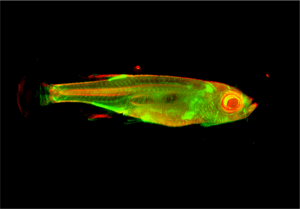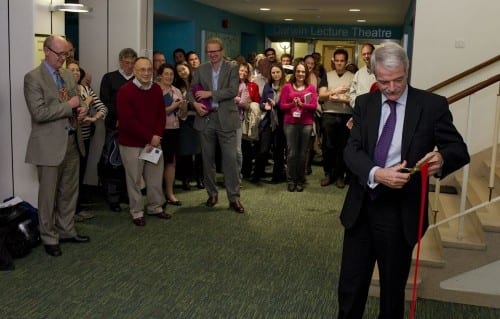Fish in Science: Zebrafish at UCL
By George Wigmore, on 7 December 2011
Related to the much-maligned minnow, many are unaware that zebrafish are in fact one of the giants of the genetics world. While more-well known, and controversial, model organisms continue to dominate the limelight, the humble zebrafish continues to plod along in the background. But a current exhibition at UCL’s Grant Museum on zebrafish and their role in science aims to change all that.
Well-understood, easily observable, and with many similarities to mammalian physiology, it should be no surprise that zebrafish studies have resulted in such a huge number of advances in a plethora of different fields. Ranging from development biology, to toxicology and evolutionary theory, its composition makes it an ideal model organism for studies of vertebrate development and gene function.
Yet despite all the incredible work, outside of the scientific community zebrafish continue to live an anonymous existence, tucked away in their domestic tanks in homes across the world.
 Close
Close



